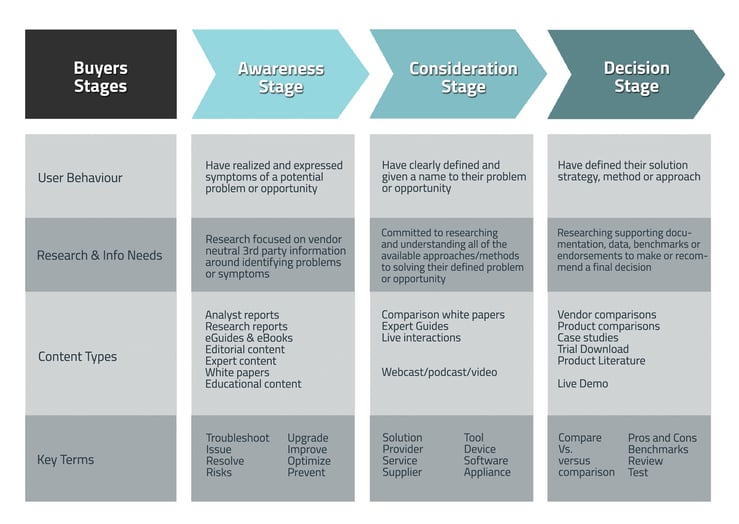Written by: Nicole Leong
The vital role of content in marketing is now widely understood. Simply put, attracting and retaining your ideal customers requires sharing valuable information with them, showing that you are not only the best people to solve their problems, but you are already doing so for others - and, by implication, can do the same for them if they so choose.
Most brands have some sort of content strategy or program in place but, far too often in the financial services industry, it’s probably one of questionable effectiveness. If you’re one of the 72% of Australian marketers who haven’t found success (success defined as having achieved business objectives, which in most cases means revenue generated) in their content marketing efforts, it’s probably time to step your content marketing game up.
Here are some insights on how.
So, you’ve got your buyer personas. Tick. Now here’s the important part: you need to map your content to each persona’s buyer journey. Content can help influence a buyer’s decision if – and only if – we deliver the right message to the right audience at the right time.
The buyer’s journey is defined as the active research process a potential buyer goes through leading up to a purchase. Your content should be designed to guide prospects along the way, from awareness through consideration to the actual decision and purchase.

To reach users in each stage, we must first understand their thought processes, behaviours and information needs.
Awareness
Someone in the awareness stage has realised and expressed symptoms of a potential problem – this is the perfect time to jump in and offer relevant, educational content which shows that you understand their problem. For example, for a provider of a personal finance app, a user in this stage is thinking about their spending habits and wondering if he/she needs to start saving more. They might find an online article “5 Easy Ways to Grow Your Savings” interesting. “Improve”, “troubleshoot” and “prevent” are words the potential buyer might use when searching for solutions to their problem. You should use them when optimising for SEO. Since users are at the start of their information search at this stage, be neutral in your messaging. In other words, stay far, far away from the product push.
Consideration
In the consideration stage, a user has a more clearly defined need and is actively searching for solutions. This is where you can play a part in influencing their solution strategy by providing solution-focused content. Use words like “solution”, “tool” and “service”. A mortgage loan provider might reach a consideration stage user through a video guide by an expert, entitled “Refinancing home loans and other alternatives - which solution suits you best?” An investment manager might reach a consideration stage potential investor through an eGuide entitled “Shares, bonds, or options - which is the right investment for your risk appetite?”
Decision
A user in the decision stage is seeking validation to determine their shortlist and finally select a provider. This would be a good time to talk about the benefits of using your brand or product over others - while trying to be as objective as possible. Use strong proof points, like case studies, third party comparisons and even offer trials. Words to use in this stage are “comparison”, “pros and cons” and “benchmark”. A health insurance provider could publish a checklist comparing important product features, positioning itself as the clear winner.
Now that you’ve got the methodology down pat, use it when you’re planning your content calendar but also apply it to ALL your existing content through a detailed content audit. Tedious, we know - but this way you’ll know what sort of content, in what formats, you’ll need to create or repurpose. The goal is to have types of content that fit each buyer stage, for each persona. Right message, right audience, right time.
We’ll leave you with this: a super handy content mapping cheat sheet. All the best!

We will be releasing ‘A Complete Guide to Content Distribution for Financial Services’ soon, so stay tuned!



